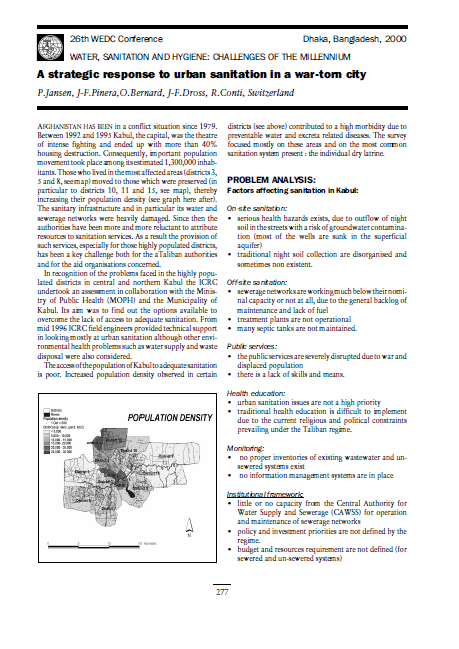A strategic response to urban sanitation in a war-torn city - Water, sanitation and hygiene: challenges of the millenium. 26th WEDC Conference
Jansen, P. Pinera, J.-F., Bernard, O., Dross, J.-F., Conti, R. (2000)

Published in: 2000
Author:
Jansen, P. Pinera, J.-F., Bernard, O., Dross, J.-F., Conti, R.
Uploaded by:
SuSanA secretariat
Partner profile:
common upload
4503 Views
19 Downloads
Content - Summary
Afghanistan has been in a conflict situation since 1979. Between 1992 and 1995 Kabul, the capital, was the theatre of intense fighting and ended up with more than 40% housing destruction. Consequently, important population movement took place among its estimated 1,300,000 inhabitants. Those who lived in the most affected areas moved to those which were preserved, thereby increasing their population density. The sanitary infrastructure and in particular its water and sewerage networks were heavily damaged. Since then the authorities have been more and more reluctant to attribute resouces to sanitation services. As a result the provision of such services, especially for those highly populated districts, has been a key challenge both for the Taliban authorities and for the aid organisations concerned.
Bibliographic information
Jansen, P. Pinera, J.-F., Bernard, O., Dross, J.-F., Conti, R. (2000). A strategic response to urban sanitation in a war-torn city - Water, sanitation and hygiene: challenges of the millenium. 26th WEDC Conference.
Filter tags
English Europe & Central Asia















